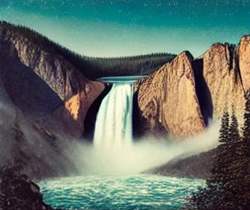
 Photography Tips for Everyday Moments
Photography Tips for Everyday Moments
In a world filled with extraordinary beauty, sometimes it's the ordinary moments that hold the most magic. In the "Photography Tips for Everyday Moments" series, William Stanek invites you to see the world through a new lens, where the everyday becomes art. Whether you're a seasoned photographer or just beginning your journey, these articles are designed to help you capture the subtle beauty that often goes unnoticed.

Transform your life with practical wisdom. Discover William Stanek's 'Living Well' series—your guide to a balanced and fulfilling life.
Discover William Stanek's Exclusive Art Collection
Explore and purchase the stunning art featured on this site. Own a piece of William Stanek's unique and captivating artwork today!
(December 21, 2024) The Art of Minimalism: Finding Beauty in Simplicity
In a world that often feels cluttered with distractions, minimalism offers a refreshing approach—both in life and in photography. Minimalist photography is about stripping down to the essentials, focusing on the elements that truly matter, and finding beauty in simplicity. This approach can lead to powerful, striking images that resonate on a deeper level, precisely because of what they leave out. Here, we’ll explore the art of minimalism in photography, offering insights and techniques to help you create images that are both simple and profound.
Introduction: The Power of Less
One of the most valuable lessons I’ve learned in photography is that sometimes, less is more. Early in my career, I often felt the need to fill the frame, to capture everything I could within a single shot. But over time, I began to realize that the most impactful images were often the simplest ones—those that focused on a single subject, used negative space effectively, and relied on a minimalist color palette.
Minimalist photography isn’t about what you include; it’s about what you leave out. By removing unnecessary elements, you allow the viewer to focus on the essence of the scene, creating a more powerful and evocative image. Whether you’re photographing a vast landscape, a lone subject, or an abstract detail, the principles of minimalism can help you see and capture the world in a new way.
Simplifying Your Scene: Techniques for Removing Distractions
The first step in minimalist photography is learning how to simplify your scene. This involves removing any elements that don’t contribute to the message or emotion you want to convey, allowing your subject to stand out.
Focus on a Single Subject: One of the most effective ways to simplify your scene is to focus on a single subject. This could be a lone tree in a field, a solitary figure walking down a street, or a single object against a plain background. By isolating your subject, you draw the viewer’s attention directly to it, creating a strong visual impact.
Declutter Your Frame: Before you take the shot, take a moment to assess your frame. Are there any distracting elements—such as background clutter, unnecessary details, or conflicting lines—that could detract from your subject? If so, adjust your composition, change your angle, or move closer to your subject to eliminate these distractions. The goal is to create a clean, uncluttered image that highlights the essential.
Use a Shallow Depth of Field: A shallow depth of field can help you simplify your scene by blurring out the background and focusing sharply on your subject. This technique is especially useful in portraiture and close-up photography, where you want to emphasize a specific detail or expression while minimizing background noise.
Pro Tip: When composing your shot, think about the story you want to tell. Ask yourself what the most important element of the scene is and how you can highlight it by removing or minimizing other elements. The simpler your composition, the clearer your message will be.
Exercise: Choose a subject and photograph it using minimalist principles. Focus on simplifying your scene by removing distractions, isolating your subject, and using a shallow depth of field if appropriate. Review your images and reflect on how the process of simplification changes the impact of your photos.
Negative Space: Using Empty Space Effectively to Enhance Your Subject
Negative space—also known as empty space—is one of the most powerful tools in minimalist photography. By intentionally leaving areas of your frame empty, you can create a sense of balance, draw attention to your subject, and evoke a feeling of calm or contemplation.
Understanding Negative Space: Negative space is the area around and between the subjects of an image. In minimalist photography, this space is often left intentionally empty or sparsely populated, allowing the subject to stand out. The use of negative space can create a sense of isolation, serenity, or focus, depending on how it’s used.
Creating Balance: Negative space helps to balance your composition, providing a visual “breathing room” for the viewer’s eye. When used effectively, it can make a small subject feel significant or a simple scene feel expansive. The key is to ensure that the negative space enhances your subject rather than overpowering it.
Composing with Negative Space: When composing your shot, think about how much space you want to leave around your subject. Consider placing your subject off-center, allowing the negative space to occupy a larger portion of the frame. This can create a more dynamic composition and draw the viewer’s attention more strongly to the subject.
Pro Tip: Experiment with different amounts of negative space to see how it affects the mood of your image. In some cases, more space will create a feeling of openness and tranquility, while less space might create a sense of intimacy or tension.
Exercise: Take a series of photos that make intentional use of negative space. Focus on how the empty areas of the frame interact with your subject and how they contribute to the overall mood and message of the image. Compare different compositions to see how varying amounts of negative space change the impact of your photos.
Color and Contrast: Leveraging a Minimalist Color Palette
In minimalist photography, color plays a crucial role in setting the tone and drawing attention to your subject. By using a limited color palette or emphasizing contrast, you can create images that are visually striking and emotionally resonant.
Choosing a Minimalist Color Palette: A minimalist color palette typically involves using just one or two colors, or variations of a single hue. This approach simplifies the visual experience, allowing the viewer to focus more on the subject and composition. Look for scenes where the colors are naturally limited—such as a blue sky against a white building, or a single red flower in a green field.
Using Contrast to Your Advantage: Contrast is another powerful tool in minimalist photography. High contrast—such as a dark subject against a light background—can create a strong, dramatic effect, while low contrast can convey a softer, more subtle mood. Consider how contrast between colors, light and shadow, or textures can enhance your minimalist composition.
Black and White Minimalism: Black and white photography is inherently minimalist, as it strips away the distraction of color and focuses on light, shadow, and form. When shooting in black and white, pay attention to the tonal contrast and how it affects the overall composition. A high-contrast black and white image can be incredibly striking, while a low-contrast image can evoke a sense of calm and simplicity.
Pro Tip: When editing your photos, consider desaturating or toning down the colors to create a more cohesive and minimalist look. Even in color photography, reducing the intensity of the colors can help achieve a simpler, more refined image.
Exercise: Experiment with color and contrast by creating a series of minimalist photos using a limited color palette. Choose scenes or subjects that naturally lend themselves to a minimalist approach and focus on how color and contrast can enhance the simplicity and impact of your images. Try both color and black and white photography to see how each approach changes the feel of the image.
Embracing Minimalism in Your Photography Practice
Adopting a minimalist approach to photography is not just about changing the way you compose your images; it’s about changing the way you see the world. Minimalism encourages you to focus on what’s truly important, to remove the unnecessary, and to find beauty in simplicity.
Seeing the World with Fresh Eyes: As you practice minimalist photography, you’ll start to notice details and compositions that you might have overlooked before. A single leaf on a barren tree, a lone figure walking across an empty landscape, or the clean lines of modern architecture—these are the kinds of scenes that lend themselves to minimalism. By training your eye to see the simplicity in everyday moments, you’ll discover a new appreciation for the world around you.
Slowing Down and Simplifying: Minimalist photography often requires you to slow down and think more carefully about each shot. Instead of trying to capture everything at once, you focus on the essentials, taking the time to compose a clean, deliberate image. This practice of slowing down can be a refreshing change from the fast-paced nature of much of modern photography.
Pro Tip: Challenge yourself to create a series of minimalist images over the course of a week. Each day, focus on finding and photographing a simple, uncluttered scene that embodies the principles of minimalism. Reflect on how this approach changes your photography and your perception of the world.
Exercise: Create a minimalist photography project that spans several days or weeks. Each day, take a single minimalist photo, focusing on simplicity, negative space, and a limited color palette. At the end of the project, review your collection and consider how your understanding of minimalism has evolved. How has this approach changed the way you see and photograph the world?
Conclusion: The Beauty of Simplicity
Minimalist photography is about finding beauty in simplicity, about focusing on what truly matters, and about creating images that resonate through their clarity and restraint. By embracing minimalism, you can transform ordinary scenes into powerful, evocative photographs that speak directly to the viewer’s emotions.
As you continue your journey as a photographer, remember that less is often more. The most impactful images are not those that try to capture everything but those that focus on the essentials. So strip away the unnecessary, embrace the empty spaces, and let the beauty of simplicity shine through in your work.
Share your minimalist photos with us on Instagram using #MinimalismInFocus. We’d love to see how you’re finding beauty in simplicity and using minimalism to create powerful, striking images.

Join William at the crossroads of technology, business, and leadership, where true influence isn't about titles - it's about inspiring action, driving change, and guiding others with integrity. Discover how authentic leadership can transform not just careers, but entire industries.
Bring Inspiration Home
Enhance your space with William Stanek's evocative art. Each piece is crafted to inspire and uplift your everyday life.

Support The Lights of Paris by Robert Stanek, William Stanek's pen name! Through vivid historical detail and deeply moving character stories, Robert takes readers on an unforgettable journey through one of history’s most transformative times.
















